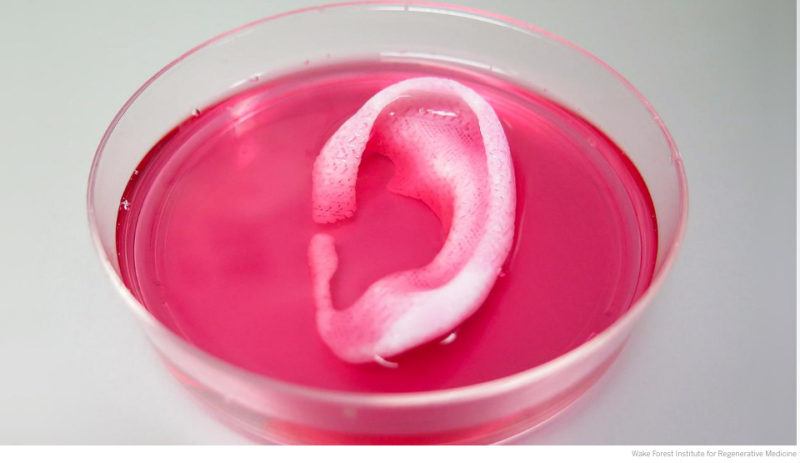3D printing is one of the latest technological advances of the modern age but few people have even made use of 3D printers at home or in their office. Industrial manufacturing companies are tapping into 3D printing to produce everything from jet engine parts to soccer cleats, reports PricewaterhouseCoopers. Now, scientists and medical professionals are taking the lead on re-creating human tissue and body parts using 3D printing technology.
The future of healthcare and medicine may very well involve implants and tissues using 3D printing. Here’s a closer look at where scientist are now, and what is coming next:
3D Printing for Implant Surgery
Surgeons and medical professionals have been trying to find effective solutions for bone grafting and joint replacement techniques for years, often turning to a patient’s own bone and tissues as a donor or resorting to cadavers and animals for donor tissue. Many surgeons use synthetic grafting materials made with compounds that easily integrate with human bone and tissue.
With 3D printing, we would be able to manufacture bone and joint tissues completely customized for the patient. 3D printing can create real, living tissues and organs ready for implantation.
Mashable recently reported on the world’s first implant surgery using 3D-printed vertebrae. A neurosurgeon at the Prince of Wales Hospital in Sydney, Australia, treated a patient who had a tumor in his spine using a custom-printed body part created with a 3D printer.
Removing the tumor with traditional surgical methods was too risky because of its location. Without treatment, the tumor would have caused compression of the brain and spinal cord which would render the patient quadriplegic. Thanks to the 3D-printed implant, the surgeon was able to perform a successful surgery. The surgeon worked with medical device company Anatomics to create a titanium implant using 3D printing technology.
The Future of 3D Printing Body Parts
Medical research on a 3D bioprinting system that can produce human-scale tissue with structural integrity has been published in Nature. The authors highlight the fact that future developments could mean we will be able to build solid organs and complex tissues.
The Integrated Organ and Printing System (ITOP) uses biodegradable material to create tissues and water-based ink to hold cells together to recreate bio-compatible tissues. Science Magazine reports how the ‘tissue printer’ creates printed materials with live cells. The final product has a fully developed blood supply and internal structure that looks and functions just like real tissue.
These live materials could be used as transplants to complement a variety of surgical procedures. Considering that more than 121,000 people are on the waiting list for an organ transplant in the United States alone, according to the U.S. Department of Health and Human Services, 3D printing live, transplantable-tissue and organs could essentially save lives.
3D printing technology is evolving at a rapid pace and is making notable waves in the scientific and medical communities. Using synthetic grafting materials, or even resorting to metal implants for bone and tissue replacement surgeries, could soon be a thing of the past. Surgeons and scientists are developing new ways to treat patients, creating ‘living’ tissue, organs, and body parts made with bio-compatible materials and 3D printing technologies.
Photo: Wake Forest Institute for Regenerative Medicine
